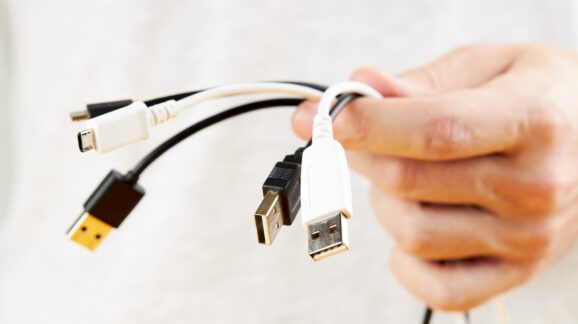“Abracadabra”: European Union Regulators Make Innovation Disappear

Photo Credit: Getty
Members of the European Parliament are eagerly awaiting their Hogwarts acceptance letters to attend the famous school of wizardry. In their view, they have performed magic after all. This week the European Parliament approved rules that would force electronic manufacturers of smartphones, tablets, headphones, keyboards, and other devices to standardize their charging ports to USB-C by the fall of 2024.
The move is being heralded as technologically and environmentally sound, decluttering consumers’ drawers of multiple charging cables and purportedly decreasing the production of e-waste. Much like the flick and twist of a wand, lawmakers are inclined to believe that regulation works like a magic spell. Say the magic words, and the desired policy effect materializes.
That isn’t the case, of course, and the European Union’s USB-C mandate is just the latest example of poorly thought out tech regulation.
USB stands for Universal Serial Bus. The “C” following USB, generally, is representative of the third generation of the connector; USB-A and USB-B came before USB-C.
It comes as no surprise that USB-C is superior to earlier versions. And one would hope that the next generation of the USB connector will be even better. But who knows when and how that will happen. At what point will the EU decide that better technology has been developed?
European regulators have essentially dubbed themselves gatekeepers of charging ports and cables. Imagine a world in which floppy disks or CD-ROMS were mandated as the standard method of storing data. Well, actually, you don’t have to.
Recently, Japan’s Minister of Digital Affairs launched an effort to eliminate archaic government mandates that still require the use of floppy disks and CD-ROMS for hundreds of business filings.
To show the extent of the problem, the lead negotiator of the EU measure raised a handful of various charging cords in one hand and a single USB-C charger in the other. He proclaimed, “We are replacing this pile of chargers with just this.” The visual demonstration was reminiscent of 1990s infomercials that show hapless consumers trying to water their lawn or organize their spice cabinet.
The idea that consumers will only need one charger for multiple electronic devices doesn’t match reality. One need only look at the demand for multi-device charging docks, something the EU might consider mandating in the future. We’ll see.
The environmental justification for standardizing charger ports has little support. Devices are still packaged and sold with charging cables. And when those chargers are worn out or lost, consumers will still purchase new ones. And the European Parliament has guaranteed the obsolescence of existing non-USB-C chargers, which will likely contribute precisely to the e-waste problem it aims to solve.
Forced standardization will ultimately lead to less innovation. Wireless charges are already available and could replace device charging ports altogether. That would allow for designs that increase water resistance, something that consumers overwhelmingly desire.
European regulators are unlikely to attend Hogwarts anytime soon. The only magical ability they have demonstrated is in making innovation and consumer choice disappear.